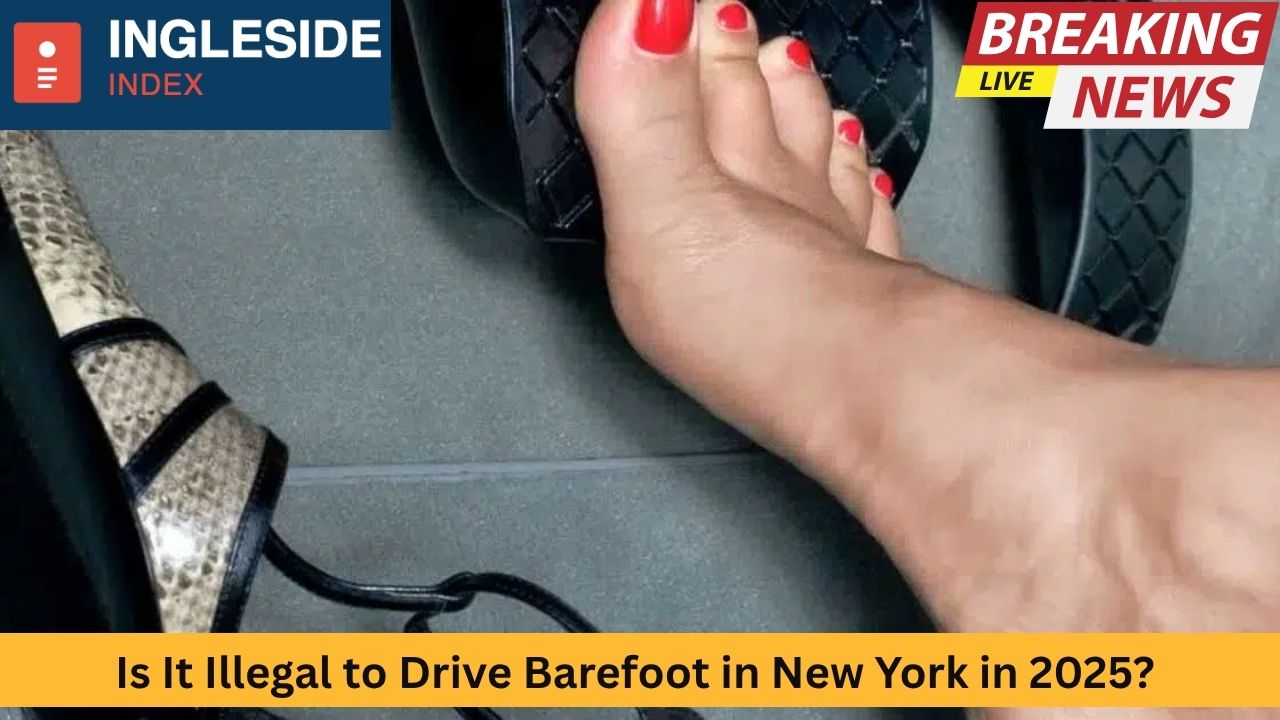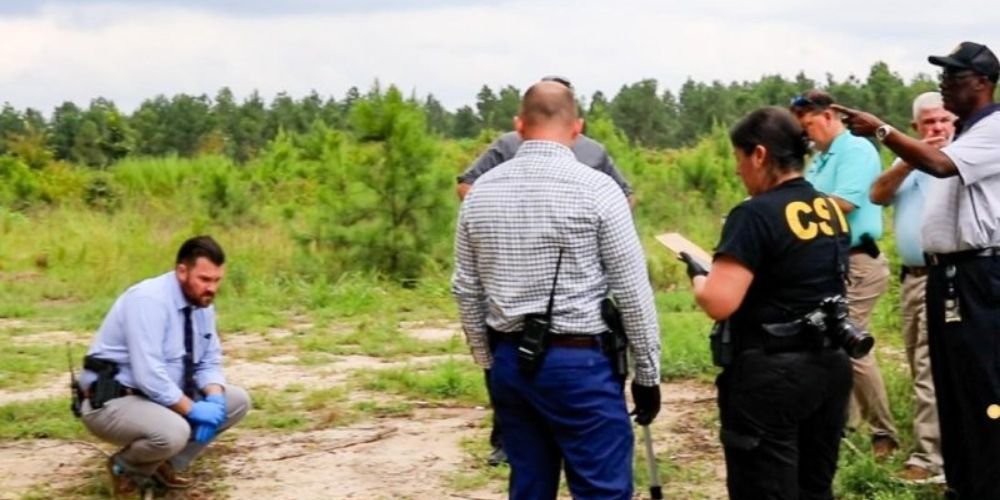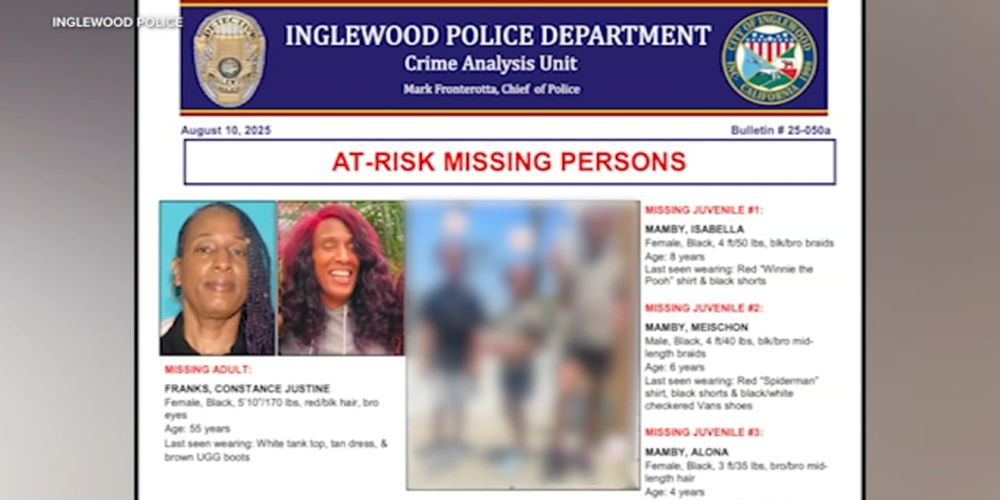Imagine cruising down Brooklyn’s Ocean Parkway in July, feet free from shoes, wind tousling your socks—if you were driving barefoot, were you breaking any New York laws in 2025? Many drivers swear it’s illegal to operate a motor vehicle without footwear, but in reality this belief is a myth. Let’s explore whether barefoot driving is illegal in New York today, why people believe otherwise, the risks involved, and how being shoeless could impact you legally and practically.
The Legal Answer: Barefoot Driving Still Legal in New York
New York State has no law requiring drivers to wear shoes. That means in 2025, as throughout prior years, it’s still perfectly legal to drive barefoot. No section of the New York Vehicle and Traffic Law mentions footwear requirements. Local cities across Upstate New York, including Albany, Rochester, and Buffalo, have not enacted ordinances banning barefoot driving. So legally speaking, whether you’re barefoot on The Bronx’s Grand Concourse or en route to Niagara Falls, the law imposes no footwear mandate.
Why the Myth Persists
Urban Legend
For decades, parents and driving instructors have discouraged barefoot driving, so the notion that it’s illegal became commonplace. Much like myths about driving with lights on being illegal, the barefoot driving prohibition became part of the collective highway folklore—even though no statute supports it.
Police Discouragement
Some New York police officers express concern about barefoot driving, suggesting it’s unsafe, though they can’t legally cite you for it alone. When an officer pulls you over for erratic behavior, they might comment on your barefoot state, reinforcing the rumor. Yet without any legal basis, this remains only a verbal admonition.
Insurance and Accidents
Insurance companies and personal injury attorneys sometimes argue that if barefoot driving contributed to a crash, the driver may share negligence. That doesn’t reflect a law against barefoot driving—it reflects that footwear can influence fault in accident claims. This contributes to the myth that it’s illegal.
Safety Risks of Barefoot Driving
Control and Sensation
Without shoes, your feet rest directly on the pedal surface. While that could improve pedal feedback for some, it can disturb others used to the feel of shoes. Uneven pressure or light slippage may occur, especially during sudden stops or acceleration.
Wet or Slippery Feet
Summer puddles, pool days, or rain-soaked sidewalks can leave your feet slippery. Rubberized pedals offer traction, but moist feet—even slightly damp—can slip and impair your ability to brake effectively.
Injury in Crashes
In the event of an accident, a bare foot may sustain greater injury—cuts, bruises, broken toes—compared to a foot protected by a sturdy shoe. Also, in a rollover or crash, your foot could become trapped, causing worse harm.
Reflex Reactions
Ticklish feet or sudden discomfort while driving barefoot can provoke flinching reflexes, potentially causing abrupt pressing or lifting of pedals. That unpredictability can be hazardous when driving.
When Barefoot Driving Can Hurt You at the Scene
Contributory Fault
New York operates under a pure comparative negligence system. If a pedestrian were hit, and the driver was barefoot, insurers or attorneys might use that fact to argue the driver was negligent for not using proper footwear, reducing any collected compensation.
Reckless Driving Accusations
Driving barefoot doesn’t automatically equate to reckless driving, which requires proof of “unreasonable endangerment.” However, in a crash, prosecutors might argue your choice of no shoes contributed to driving dangerously. Legality does not equal safety.
Insurance Denials
If an insurance assessment concludes that being barefoot contributed to a crash, they could partially deny or reduce claims. They would frame it not on lack of legal obligation but failure to exercise necessary caution.
Statewide Context: How New York Compares
Other States’ Positions
Across the U.S., all 50 states, including New York, allow barefoot driving. Some states, like Indiana or Missouri, officially caution it’s unsafe though not illegal. In states like Nevada or California, barefoot driving is legal—but may be factored into determining fault after a crash.
Motorcycle Rules
While passenger vehicle drivers face no footwear mandate, motorcycle riders in some states must wear shoes; New York does not require them either. If you ride a motorcycle in New York barefoot, you’re still legal—but again, not advised.
Common Forms of Unsafe Footwear
Flip-Flops
These can slip off, get lodged under pedals, or cause erratic pressure. They commonly slip further than bare feet.
Heels and Wedges
High heels misalign foot position on the pedal, threaten stability, and heighten the chance of not reaching pedals.
Loose-fitting Sandals
Open-toed or loosely strapped shoes can trap toes or fail during emergency braking.
Boots with Long Laces
Laces may entangle under pedals—a surprisingly frequent cause of pedal interference.
Among these, driving barefoot can sometimes be safer than flip‑flops or heels—but the safest remains properly fitted shoes with secure grip.
Real‑World Data on Pedal Errors
The National Highway Traffic Safety Administration estimates that around 16,000 annual crashes result from pedal errors—hitting the wrong pedal, slipping, or unintentionally depressing two pedals at once. Improper footwear, including barefoot or flip-flops, accounts for many of these. A single foot slip at 40 mph can be life‑threatening. Even in New York City, where statistics highlight accidents due to pedal misapplication, footwear plays a noticeable, though unquantified role.
Should You Drive Barefoot? Weighing Practical Pros and Cons
Pros
-
Better Pedal Feel: Some drivers adjust pressure more instinctively.
-
Comfort: Especially on hot days, going barefoot feels less restrictive.
-
Avoiding Dangerous Shoes: Alternatives like flip-flops or heels might be worse.
Cons
-
Reduced Control: Moist feet may skid.
-
Injury Risk: No protection during collisions.
-
Legal Consequences: Barefoot could be claimed as negligence component in liability.
-
Unfamiliarity: Reflexes and unfamiliar sensation may hinder performance.
Tips for Safer Barefoot Driving
If you opt to drive barefoot in 2025, consider these guidelines:
-
Keep Feet Dry: Wipe thoroughly if damp.
-
Test Pedal Feel: Get comfortable in a safe parking lot.
-
Avoid Wet Roads: Post-rain barefoot driving multiplies slip risk.
-
Emergency Preparedness: Keep a pair of flat, close-toed shoes in the car.
-
Switch Footwear if Needed: If required to wear formal or protective footwear, change after parking.
What to Do in Case of a Crash
-
Stay Calm and remove any distraction focus—barefoot or not.
-
Exchange Info with other parties and take thorough photos (pedal area, your feet).
-
File Accident Reports, including taxi, police or DMV forms—remain consistent.
-
Notify Your Insurer, without admitting fault. Mention you were barefoot, if asked.
-
Consider Legal Counsel, especially if injuries, property damage or coverage issues arise.
Comparison: Barefoot vs. Shoes
| Feature | Barefoot | Safe Shoes (flat, grippy) |
|---|---|---|
| Pedal Feel | Direct, variable | Consistent with training, less shock |
| Control in Wet | High slip risk | Better traction |
| Injury Protection | None | Cushioning and coverage |
| Convenience/Comfort | Very comfortable | Less in hot climates, but manageable |
| Legal Perception | May be viewed as negligent | Standard, no raised concerns |
Expert Opinions
Automotive safety experts frequently assert that while barefoot driving isn’t illegal, it carries inherent risks. Much like avoiding texting or eating while driving, footwear choice can influence safety. Many instructors now actively warn against barefoot driving, recommending breathable driving shoes instead.
Motorcycle safety advocates also recommend close-toed, sturdy shoes even for bikes—reinforcing the general principle that protecting your feet matters behind the wheel of any vehicle.
The Bottom Line
As of July 2025, driving barefoot in New York remains legal. No laws or statewide ordinances ban it, no fines are attached, and police cannot ticket you for barefoot driving alone. However, legal does not always mean safe.
The decision to drive barefoot should be made with full awareness: damp feet can slip, reflexes can misfire, and liability in crashes may use your barefoot choice as evidence of negligence. Compared to risky footwear like flip-flops or heels, barefoot driving may be safer—but the best practice remains wearing properly insulated, flat, close‑toed shoes with good grip.
By understanding the law, staying informed about risks, and preparing with sensible alternatives, you can make safe decisions whether shoed or barefoot.
Conclusion: Freedom with Responsibility
In 2025, New Yorkers are free to drive barefoot, whether around Manhattan or along the shores of Lake George. But freedom comes with responsibility. The law grants liberty—but safety demands prudence. If driving barefoot suits your style, do so thoughtfully. Keep your feet dry, stay confident behind the wheel, and always consider keeping a pair of good driving shoes handy. That way, you’re ready—safe, compliant, and legally on course.











Leave a Comment